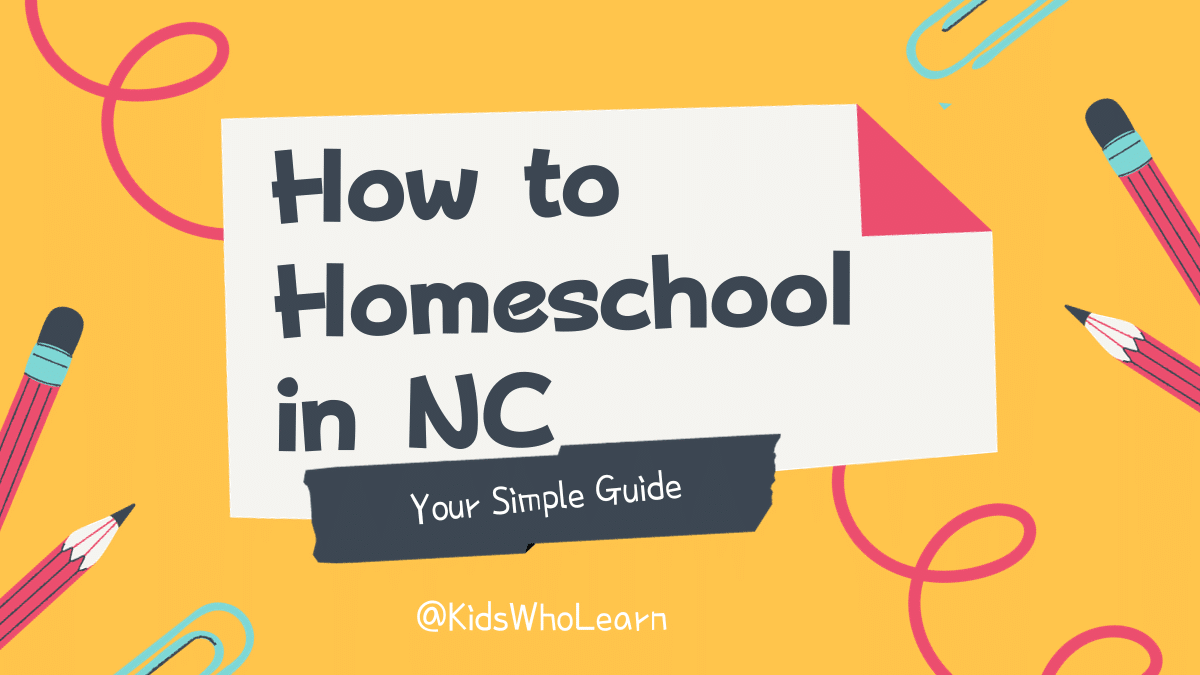Choosing to homeschool your child in New York can be a rewarding and fulfilling experience for both you and your child. As a parent, it’s essential to understand the steps and guidelines to follow in order to successfully homeschool in the state. Equipping yourself with the right knowledge and resources will ensure your child receives a solid education tailored to their unique needs and interests.
New York State has specific laws and regulations that govern homeschooling, which can seem intimidating at first. However, once you become familiar with them, you will be better prepared to navigate the process. From curriculum planning to assessing your child’s progress, it’s crucial to understand your legal obligations and the educational landscape of homeschooling in New York. With this solid foundation, you will feel more confident as you guide your child on their educational journey.
Key Takeaways
- Familiarize yourself with New York State homeschooling laws
- Plan curriculum based on your child’s unique needs
- Utilize resources, assessments, and methods to enhance your homeschooling experience
Understanding New York State Homeschooling Laws
Requirements
Before starting your homeschooling journey in New York, you need to familiarize yourself with the state’s specific requirements. Knowing these regulations will help you provide a compliant education for your child. Here’s what you should do:
- Submit a notice of intent: At the beginning of each school year, you must send a letter to your local superintendent within 14 days of homeschooling commencement. It should include the student’s name, age, grade level, and your address.
- Create an Individualized Home Instruction Plan (IHIP): Within 4 weeks of receiving your notice of intent acknowledgment, submit an IHIP. This document details the educational curriculum for the school year, outlining the:
- Instructional materials
- Methods of evaluation
- The syllabus for each subject
- Comply with New York State’s compulsory subjects: Homeschooled students need to cover certain subjects in their curriculum, depending on their grade level. Examples include:
- Reading, writing, and arithmetic (grades 1-6)
- Social studies and science (grades 1-9)
- Meet instructional hour requirements: You must provide the following number of instruction hours for your child each year based on their grade level:
- 900 hours for students in grades 1-6
- 990 hours for students in grades 7-12
Monitoring
To ensure your homeschool program is running smoothly, New York State has a monitoring system in place. This helps in keeping track of your child’s progress and staying compliant with state requirements:
- Submit quarterly reports: Every homeschooler in New York needs to provide progress reports every quarter, which includes:
- A list of the instructional materials used during the quarter
- A description of the student’s progress in each subject
- Attendance record
- Conduct annual assessments: Schedule regular evaluations to assess your child’s progress each year using one of the following methods:
- Taking a standardized test approved by the state
- Having a certified teacher review your child’s work
Remember to keep records for each of your homeschool student’s evaluations, as these can be requested by the superintendent.
By following these guidelines and being attentive to the homeschooling laws in New York, you’ll be on your way to providing a well-rounded and compliant education for your child.
Curriculum Planning for Homeschooling
Core Subjects
When planning your homeschool curriculum in New York, you need to cover the required core subjects. For grades 1-6, you’ll need to teach:
- Reading
- Writing
- Arithmetic
- Social studies
- Science
- Art
- Music
- Health
- Physical education
For grades 7-12, the core subjects include:
- English language arts
- Math
- Social studies (including U.S. history, world history, and geography)
- Science (including biology, chemistry, and physics)
- Art
- Music
- Health
- Physical education
Remember to adapt your teaching resources to your child’s grade level and learning style. You can use various materials, such as textbooks, educational websites, and more, to design an engaging and comprehensive curriculum. Be sure to plan lessons with both short-term and long-term learning objectives.
Electives
In addition to the core subjects, consider offering electives that cater to your child’s interests. Electives can provide a well-rounded education and give them opportunities to explore and nurture their passions. Some popular elective options include:
- Foreign languages
- Computer programming
- Creative writing
- Drama/theater
- Photography
- Robotics
- Home Economics
Make sure to document your child’s progress in both core subjects and electives as part of your homeschool records. Keeping track of their learning journey can help you adjust your teaching approach and make improvements when needed. Have fun creating a tailored homeschool experience that not only meets the New York requirements but also sparks your child’s love for learning.
Methods and Techniques for Homeschooling
Traditional Method
The Traditional Method follows a structured curriculum similar to that of conventional schools. You’ll plan lessons and activities that cover subjects like math, language arts, social studies, and science. Focus on your child’s grade level and use textbooks, workbooks, and other resources to help them learn.
- Create a schedule: Make a timetable with dedicated hours for each subject, ensuring a balance between academics and leisure.
- Set clear goals: List your objectives for each subject and monitor progress.
- Adjust to individual needs: Customize the curriculum for each child’s learning style and pace.
Unit Studies
In Unit Studies, you’ll integrate multiple subjects under one central theme. Instead of teaching subjects separately, this method aims to offer students a more in-depth understanding of a topic. For example, you can explore the Solar System, connecting subjects like astronomy, math, history, art, and literature.
- Choose a theme: Consider your children’s interests and current affairs.
- Gather resources: Locate books, videos, and online materials related to the theme.
- Plan activities: Design hands-on projects and field trips that complement the theme.
Unschooling
Unschooling is a more relaxed, child-directed learning approach. Rather than following a structured curriculum, you’ll allow your children to explore their interests and learn at their own pace. As a parent, you’ll facilitate learning experiences and provide resources to help develop your child’s natural talents and passions.
- Observe your child: Pay attention to their interests and encourage them to delve deeper into those topics.
- Offer choices: Provide a variety of educational materials and experiences to facilitate learning.
- Support self-direction: Encourage your child to take the initiative in their learning journey.
Online Learning
With Online Learning, you’ll leverage digital resources such as online courses, e-books, educational websites, and interactive games. This method provides a flexible and dynamic learning environment tailored to your child’s learning style and preferences.
| Advantages | Disadvantages |
|---|---|
| 1. Access to diverse resources | 1. Limited social interactions |
| 2. Personalized learning paths | 2. Potential for screen-time overload |
| 3. Self-paced learning | 3. Requires self-discipline |
Remember to:
- Vet online resources: Ensure that the content and providers are credible.
- Monitor progress: Regularly check your child’s progress and provide feedback.
- Encourage social interaction: Plan activities and outings to help your child connect with others.
Assessing Homeschooled Student Progress
As you homeschool your child in New York, it’s essential to periodically assess their progress to ensure they are on track with learning goals. The two main methods for evaluating student progress are Standardized Testing and Portfolio Reviews.
Standardized Testing
Standardized testing serves as a benchmark to gauge your child’s academic performance. These tests measure your child’s achievements against their peers and are typically required by the state:
- New York requires homeschoolers to take standardized tests in specific grades: 4th, 6th, and 8th, as well as in high school.
- You’ll have the option to choose from several tests approved by the state, including the Iowa Test of Basic Skills, the Stanford Achievement Test, and the California Achievement Test.
- Make sure to administer the test according to the state’s regulations, which typically involve selecting a qualified test administrator.
Some benefits of standardized testing:
- Objective measurement: Tests provide a standardized means of comparing your child’s performance with other students their age.
- Identifying strengths and weaknesses: The testing can help you identify areas where your child excels or may need additional support.
- Transparency with educational authorities: These tests help demonstrate that your child is meeting state education requirements.
Portfolio Reviews
Portfolio reviews offer a more holistic view of your child’s progress by showcasing the work they completed throughout the year. This method can be especially beneficial for homeschoolers, as it allows for the evaluation of a variety of learning styles.
To create a well-rounded portfolio, follow these steps:
- Collect and organize: Save samples of your child’s work, such as essays, math problems, and artwork. Organize them by subject to demonstrate a comprehensive understanding of the material.
- Document progress: Keep a record of your child’s learning objectives, achievements, and any struggles they encountered. Show progress over time with dated samples of work.
- Include assessments: Add any tests, quizzes, or exams that display your child’s understanding and mastery of specific topics.
- Present extracurricular activities: Showcase any additional activities your child participated in, such as field trips, sports, or clubs, to exhibit a well-rounded education.
Portfolio reviews come with several benefits:
- Flexibility: You can cater the portfolio to your child’s unique learning style and educational experiences.
- Parent involvement: The process allows you as a parent to personally evaluate your child’s progress.
- Comprehensive assessment: A portfolio showcases your child’s growth and development in various subjects and skills.
By using Standardized Testing and Portfolio Reviews, you can effectively assess your child’s homeschool progress, ensuring they are on track with their education and meeting New York state requirements.
Homeschooling Resources in New York
Local Support Groups
In New York, you can find various local support groups dedicated to homeschooling. These groups provide a sense of community, share resources, and offer opportunities for socializing and learning together. To find a group near you, check out websites like hslda.org or simply search online by typing “homeschool support groups in [your city/town]”.
Online Communities
Do not underestimate the power of online communities – they can be an invaluable resource for homeschooling in New York. Connecting with others through online forums, social media groups, and websites can provide you with inspiration, advice, and a variety of educational resources. Some popular websites and platforms to check out include Facebook, Time4Learning, and The Homeschool Mom.
Educational Events
To supplement your homeschooling efforts, take advantage of educational events happening in New York. Joining workshops, field trips, and conferences related to homeschooling can enrich your experience, help you learn new teaching methods, and expand your knowledge about various subjects. You can find these events through local support groups, online communities, or by visiting the websites of educational institutions and organizations.
Procedures for College Application as a Homeschooled Student
Applying to college as a homeschooled student in New York can be an exciting yet overwhelming experience. Don’t worry! We’ve got you covered with some key areas to focus on during the application process.
Transcripts
As a homeschooled student, you’ll need to provide a transcript that clearly outlines your courses, grades, and achievements. To create a comprehensive transcript:
- Make a list of all the subjects you’ve studied and the grade levels completed.
- Use a consistent grading system (letter grades, percentages, or a 4.0 scale).
- Include any extracurricular activities or accomplishments that showcase your well-roundedness.
- Organize your transcript in a clear, easy-to-read format.
Standardized Tests
Most colleges require standardized test results as part of their application process. These tests may include the SAT, ACT, or even subject-specific exams, such as the AP or SAT Subject Tests.
- Research each college’s testing requirements on their website.
- Register for the tests in advance and give yourself ample time to prepare.
- Study using resources like practice exams, test prep books, and online tools.
- Consider taking the tests more than once to improve your scores.
- Keep track of test results and include them in your application package.
Recommendation Letters
Colleges often wish to see recommendation letters from mentors, teachers, or coaches who can speak to your abilities and character. To obtain strong recommendation letters:
- Consider asking individuals who know you well and can provide specific examples of your strengths.
- Provide at least a month’s notice and politely remind recommenders as deadlines approach.
- Offer resources, such as your resume or academic goals, to assist in writing the letter.
- Make sure to sincerely thank your recommenders and keep them informed about the results of your applications.
Following these guidelines, you’ll be well on your way to presenting a strong college application as a homeschooled student in New York. Best of luck!
Transitioning from Homeschool to Public School
Deciding to transition your child from homeschool to public school can be a big step for both you and your child. It’s important to be prepared and follow some guidelines to help make the process smoother.
Firstly, familiarize yourself with the public school’s requirements and the registration process in New York. You can do this by reaching out to your local school district’s homeschool liaison or the guidance counselor at the school. They can provide you with all the necessary forms and guide you through the documentation needed, such as samples of your child’s work, progress reports, and any standardized test scores if applicable.
When transitioning, it’s essential to make sure that your child’s learning aligns with the expectations for their grade level in public school. To do this, you can compare your homeschool curriculum with the New York State Common Core Learning Standards. This will help you identify any gaps in your child’s education and address them before the transition.
Talk to your child about the upcoming change and answer any questions they may have. It may help to visit the school together and meet with teachers, staff, and other students to get acquainted with the environment. Encourage open communication with your child throughout this transition period.
Finally, get involved with the school community. Attend PTA meetings, parent-teacher conferences, and school events. Not only will this make you feel more connected to the school, but it will also signal to your child that you are engaged and supportive of their education in the public school system.
By staying informed, keeping communication open, and getting involved in the school community, you can support your child as they make the transition from homeschool to public school in New York.
Frequently Asked Questions
What are the requirements for homeschooling in NY?
To homeschool in New York, you must submit a Letter of Intent to your local school district within 14 days of starting your homeschool journey. Next, create an Individualized Home Instruction Plan (IHIP) that outlines the curriculum and learning objectives for the year. Submit quarterly reports and annual assessments to show progress and meet state educational standards.
How can I homeschool in NY for free?
There are numerous online resources and local support groups to help you homeschool for free, such as Khan Academy and Ambleside Online. Public libraries also offer free educational resources and materials. You can also connect with other homeschooling families in your area to share resources, experiences, and support.
How much does homeschooling cost in NY?
Homeschooling costs vary depending on the curriculum you choose, educational materials, and any extra-curricular activities or classes. On average, homeschooling expenses range from $300 to $1,000 per child per year. However, you can limit costs by using free resources and participating in co-ops or group activities.
Is it hard to homeschool in NY?
Homeschooling in NY can be challenging due to the state’s regulations and paperwork requirements. However, with proper planning and dedication, you can create a successful homeschooling experience for your child. Reach out to local homeschool support groups, and take advantage of online forums or resources for guidance and assistance.
How do I submit a letter of intent to homeschool in NY?
Submit your Letter of Intent to homeschool to your local school district within 14 days of starting homeschooling. Include your child’s name and age, your address, and the date you began homeschooling. Ensure you comply with state laws and follow the proper procedures for submitting your letter.
What accredited homeschool programs are available in NY?
There are several accredited homeschool programs available in NY, such as Bridgeway Academy, Time4Learning, and Oak Meadow. These programs provide curriculum materials, online classes, and support to help your child succeed in their homeschooling journey. Accredited programs ensure that your child’s education meets state standards and can be more easily recognized by colleges or future employers.







